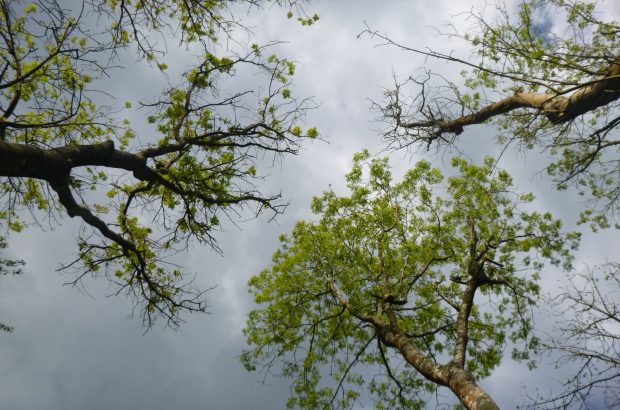Ash dieback and resilience
Ash dieback is now fully upon us in all parts of England. As the volume of infected leaf litter builds up in woodlands containing ash, the increased spore volumes of the fungus and repeated infection of ash foliage are causing progressively more stress to trees. This is combined with infection of the branch structure and stem, secondary pathogens, and existing stresses leading to widespread mortality in the more advanced areas.
If we are to avoid a large-scale deterioration and loss of tree cover in ash dominated woodlands we need to take action. As the disease progresses across the country forestry work programmes will need to be amended, machinery upgraded, previously neglected woodland re-engaged with, and safety works carried out on a scale not seen since the catastrophic outbreak of Dutch elm disease in the 1970s.
It is difficult to view the decline of ash as a standalone issue because it exists in parallel with the twin threats of climate change and further pest and pathogen outbreaks. Previous Forestry Commission blog posts consider these. If we want to mitigate the impacts of the loss of ash we must simultaneously address these threats - the progression of ash dieback forces our hand in what is already an urgent situation.
A new role in the Forestry Commission
In response to the impetus provided by ash dieback and its parallel threats, the Forestry Commission created a new role – Woodland Resilience Officer. Until recently the only one of these roles was in the southeast of England, the reason being that the development of ash dieback infection is most advanced in this region. For the last 18 months I have carried out that role.
At its broadest, the brief has been to support the woodland sector to respond to ash dieback and ensure lessons learnt in in the southeast are integrated into national guidance. Beyond that it has been to encourage land owners and managers with a wide array of differing objectives to use the tools available to them to create new woodlands and manage existing ones with resilience in mind.
Simply bringing neglected woodlands back into management is a good first step as this is important for biodiversity, observing and responding to stressed trees, and for a continuity of timber production to provide the wood products we enjoy and fund safety and other works in the wood.
It’s an exciting role and as I see it, right at the interface of science, policy and practice, all of which can benefit from closer integration. Foresters have always been pragmatic and have often experimented. However, when faced with the current threats it is vital that they have access to up to date information on the changes that we are likely to see in the future, where uncertainty exists, and how best to navigate these risks in their decision making.
Three Recommendations
If I had three key suggestions based on the last year and a half of talking to people who own or manage woodland, they would be:
- Develop and focus on management objectives for a site. Where safety overrides other objectives, ash may need to be made safe sooner rather than later. In some cases it may be prudent to remove much of the ash to make the operation economically viable but wherever possible it should be retained and natural regeneration promoted to conserve ash as a woodland tree in the future. The Forestry Commission guidance on Managing woodlands in light of ash dieback can help.
- Consider the trajectory of the woodland. Where is it going and where do you want it to go, and is this compatible with the likely impacts of climate change? Is genetic, species and structural diversity being promoted? Use the recent Forestry Commission guidance on Managing England’s woodlands in a climate emergency to understand climate change impacts and adaptation options.
- Know the soils and site conditions you are working with. Use ground vegetation and soil pits to understand the variation in soil moisture, richness and depth across a site. Use the ESC-DSS tool to support your species choice decisions and ensure you plant and promote site suitable species. More information is available in a new Operations Note on ash replacement species and information on grants for restocking following the loss of ash is available on the Countryside Stewardship pages of GOV.UK.



